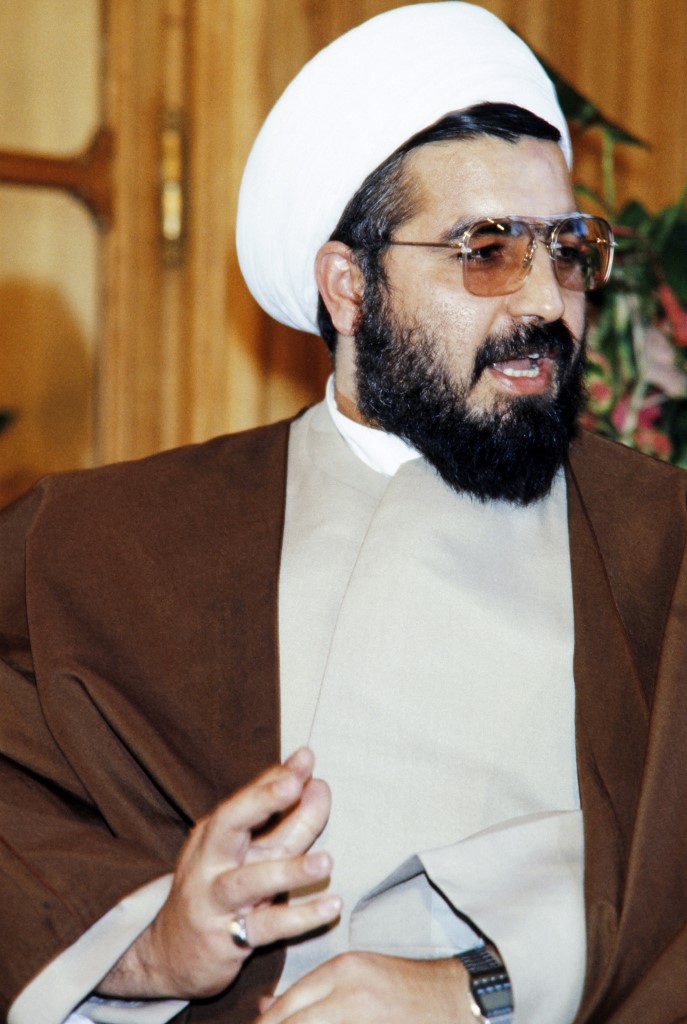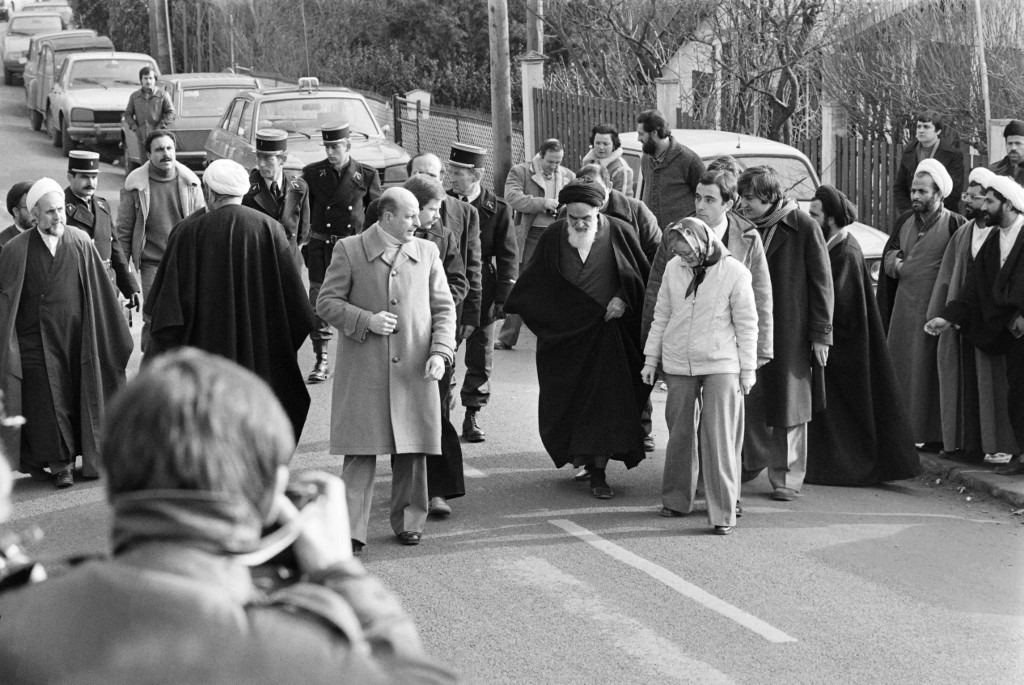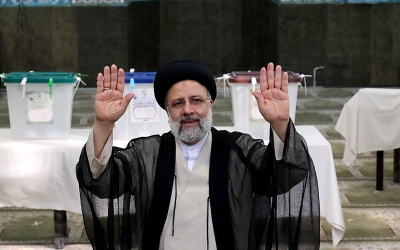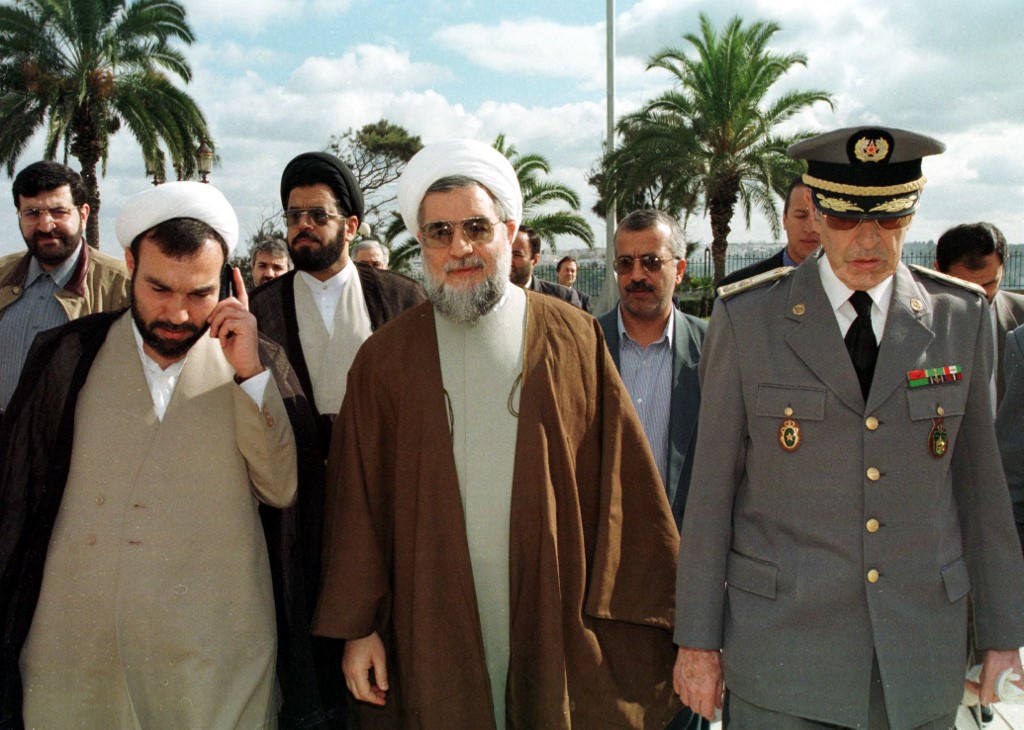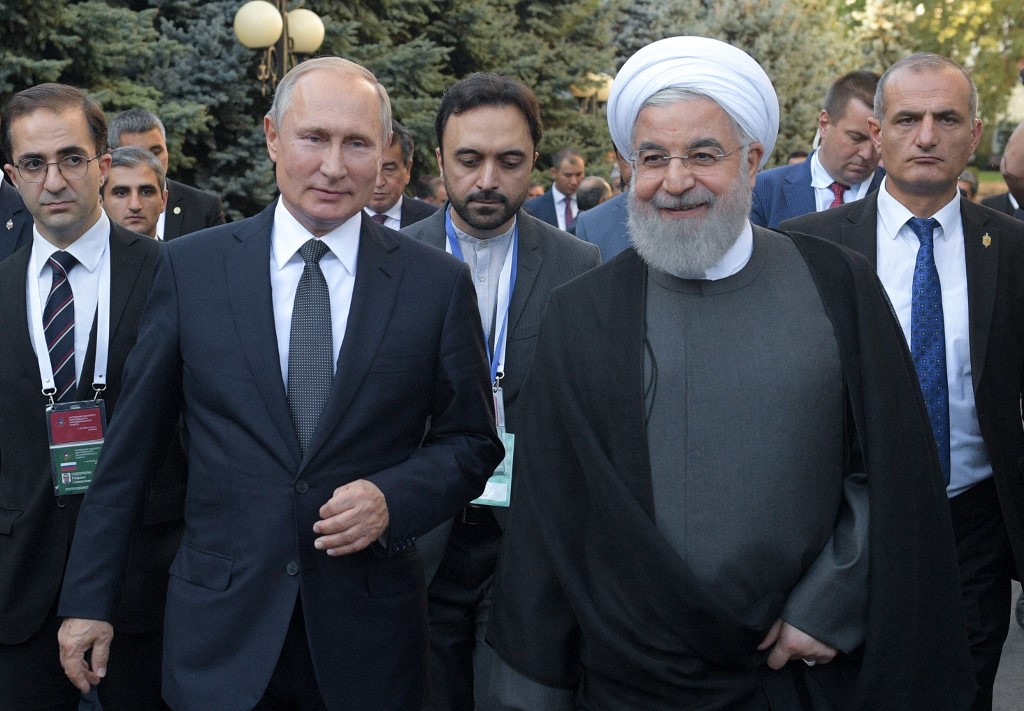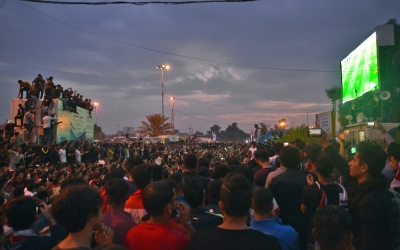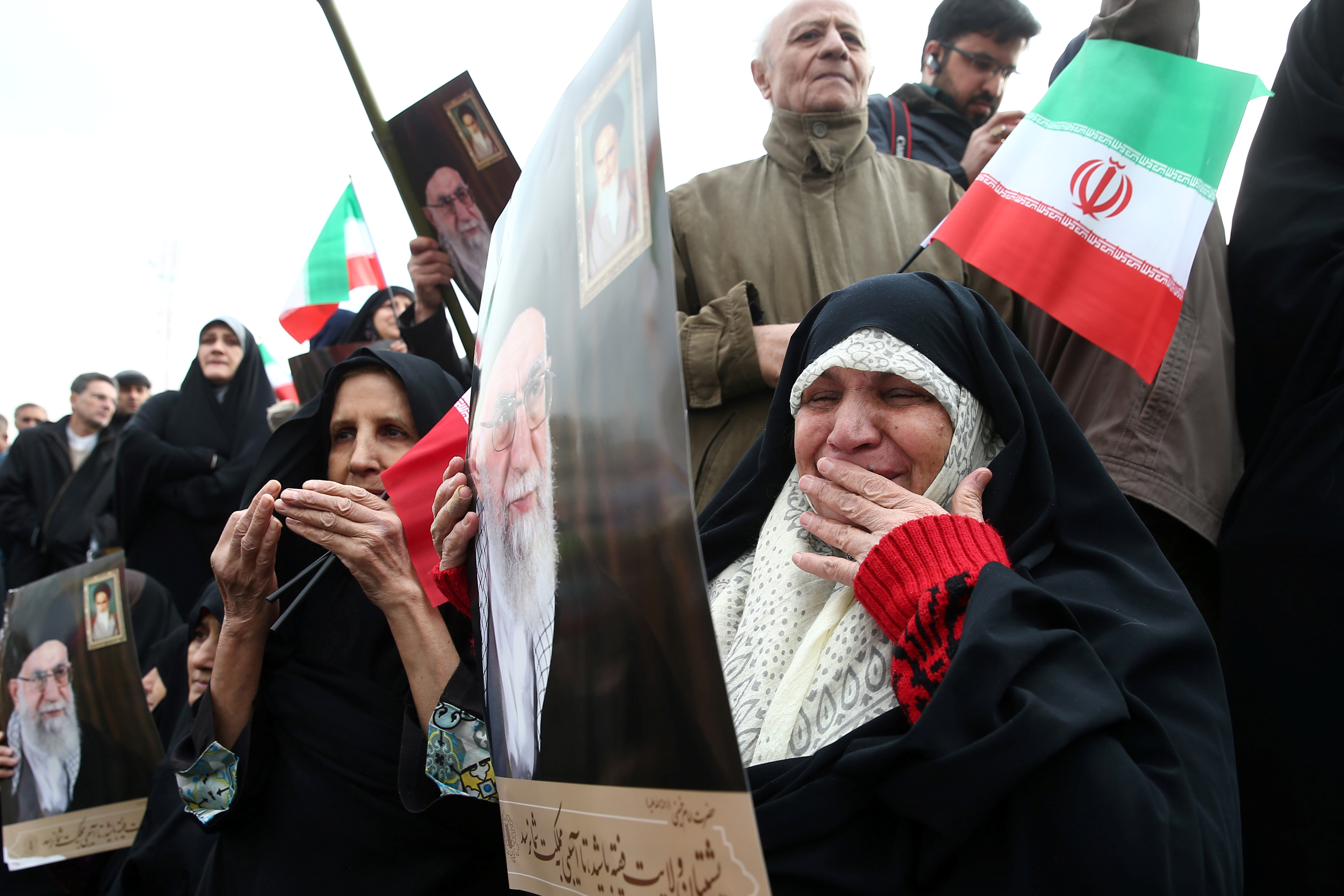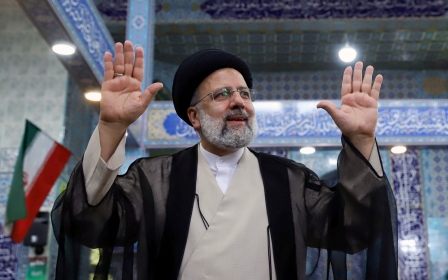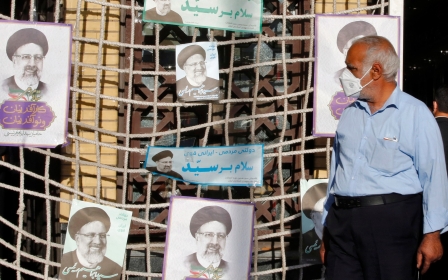Hassan Rouhani: The life and legacy of Iran's 'diplomat sheikh'
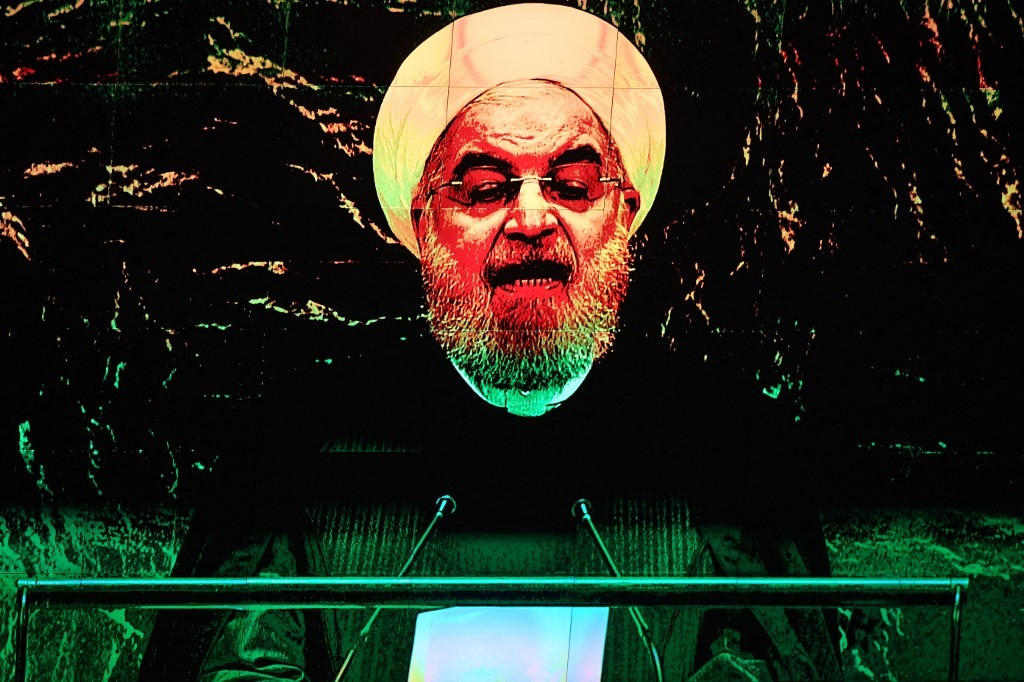
Iranian President Hassan Rouhani will leave office in August after nearly eight years in power - a period of diplomatic turmoil and financial hardship for many Iranians.
Following the presidential election on Friday, cleric Ebrahim Raisi is set to succeed Rouhani, in a result that will delight the country’s conservatives, who staunchly oppose social reform and reviving ties with the West, and dismay reformers, the camp who helped Rouhani to power.
Raisi was elected president with 61.95 percent of the vote, according to figures released by Interior Minister Aboldreza Rahmani Fazli. The three other candidates had conceded defeat earlier on Saturday.
"I congratulate the people on their choice," said Rouhani. Governing amid a constant battle with the conservative establishment, the president leaves behind a legacy of negotiating with the West through his nuclear policy and opening up the internet and social media to ordinary Iranians.
New MEE newsletter: Jerusalem Dispatch
Sign up to get the latest insights and analysis on Israel-Palestine, alongside Turkey Unpacked and other MEE newsletters
Rouhani, originally named Fereidoun after a king in Persian mythology, was born in 1948 in Sorkheh, a county in Iran’s north-central Semnan province, his family home for generations.
His father owned a grocery store, but Rouhani followed the path of his grandfather and great grandfather, who were Shia clerics.
Rouhani left his county, and school, aged just 12 to study at the Semnan seminary. One year later, in 1961, he transferred to another training school in the holy city of Qom, south of Tehran.
Clerics and seminary staff frowned on non-religious education, but Rouhani was undeterred and secretly studied for a diploma.
He once said that if the seminary found out anyone was studying, they would be expelled. But he got away with it: Rouhani took the national exam and was admitted to the University of Tehran’s law school in 1969.
For a year, the young Rouhani commuted between Qom and Tehran. But after marrying, he decided to leave the seminary for the capital.
It was around that time that Rouhani began in earnest his revolutionary fight against the US-backed Shah, although he was first apprehended for speaking out against the autocratic leader aged just 16.
Courting Khomeini
Gradually, he turned into a popular religious speaker, giving talks in cities like Tehran and Isfahan.
In 1977, when he was chosen to speak at the mourning ceremony for the eldest son of Rohollah Khomeini, the leader of the 1979 Islamic Revolution, he surprisingly called him “Imam”, a term used for the 12 figures seen by Shia Muslims as the divine and political successors to the Prophet Muhammad.
This, Rouhani later wrote in his memoirs, was a nod to Khomeini’s revolutionary status and a comparison to the Prophet Abraham, who is told by God: “I am making you the Imam of mankind” during his own revolution.
At the seminary, Rouhani often faced jibes about his last name, Fereidoun, as it was not deemed befitting of a future ayatollah, which is the term for a senior religious leader in Shia Islam.
He gradually began using the family name Rouhani but did not change it legally.
This turned out to be a stroke of luck in 1979 when he fled Iran for the UK. He was only able to escape because the Shah’s secret police were searching for a Rouhani.
In Britain, he studied law at Lancaster University, going on to teach Islamic law and the philosophy of evil.
He was then admitted to Harvard University, Cambridge, Massachusetts, USA.
But the triumph of the Islamic Revolution put an end to his academic ambitions, prompting a swift return home.
Rouhani's rise
Ali Khamenei, the deputy head of the defence ministry who later became Iran's Supreme Leader, tasked Rouhani with forming the army’s religious wing.
Then, one year later, aged 31, Rouhani ran in parliamentary elections and was elected. He was later chosen as the chairman of the parliamentary defence commission.
Together with then-parliament speaker Ayatollah Akbar Hashemi Rafsanjani, who later also became president, Rouhani formed a secret group composed of MPs from the left and right, under the name The Council of Wise Men, to find a way to end the ongoing, eight-year-long Iran-Iraq war quickly.
Their recommendations came to nothing, but Rouhani was showing the hallmarks of a shrewd political operator.
In the mid-1980s, with the war still raging, he was again involved in backdoor meetings. He was chosen to represent Iran as a negotiator with the US, which was scheming to sell Iran weapons - despite an arms embargo - in return for the release of American hostages and to help fund a right-wing rebel group in Nicaragua.
Some arms were delivered to Tehran, and some US hostages freed, but the conspiracy - later known as the Iran-Contra scandal - fell apart in 1986 when it was revealed by a Lebanese magazine.
In 1989, the Supreme National Security Council, tasked with making final decisions on crucial foreign policy matters, domestic security, and war, was formed, with Rouhani named as its secretary and Khamenei’s representative.
Nuclear era
During Rafsanjani’s presidency, which lasted from 1989-97, Rouhani, who was known by this point as the 'Diplomatic Sheikh', presented the president with a report about the cost benefits of resolving all disputes with the US. Rafsanjani agreed with its findings but Khamenei rejected it.
In 1996, Rouhani's 18-year-old son was found dead at home. There were, at the time, three hypotheses about the cause of death: suicide, an accidental shot with a gun, and murder by an unknown assailant.
The following year, Rouhani pulled out of his campaign for the presidential elections, after his rival Nategh Nouri was backed by the country's conservative supporters.
At the time, Rouhani was still a moderate conservative, but gradually turned into a moderate who was closer to the reformists.
In 2003, Rouhani played a pivotal role in orchestrating the release of Grand Ayatollah Hussein-Ali Montazeri from house arrest. Montazeri was once the chosen successor of Ayatollah Khomeini, but disputes between them led to his dismissal.
In the same year, the People's Mujahedin Organization of Iran (MEK), a group labelled as terrorists by Iran and Iraq, made claims about Iran’s nuclear programme, leading the International Atomic Energy Agency (IAEA) to launch an investigation.
Tehran was accused of building a nuclear bomb, beginning two decades of tensions between Iran and the West.
Rouhani led the talks with three European countries (UK, Germany, and France) to solve the disputes.
Still, the few deals they struck did not last long, as hardliner Mahmoud Ahmadinejad won the 2005 presidential elections, putting Tehran on the offensive, which resulted in seven UN Security Council resolutions against Iran.
When Ahmadinejad took office, Rouhani resigned from his post on the Supreme National Security Council.
Rafsanjani support
In 2009, Rouhani sought to run for office again.
According to a source talking to Middle East Eye (MEE) on the condition of anonymity, he launched a political campaign. He even started negotiating with a moderate conservative to be his running mate. Still, when he saw popular reformist Mir-Hossein Mousavi was planning to run, he decided not to continue.
In the 2013 presidential elections, Rafsanjani, who was considered the leader of the opposition to the Islamic Republic’s favoured candidates, was surprisingly barred from running by the hardline-dominated Guardian Council, which was tasked with vetting the candidates.
Before the disqualification, Rouhani wanted to drop out of the race, but Rafsanjani had told him to keep campaigning, fearing - correctly - that he, Rafsanjani, would be declared ineligible.
Banned from the candidacy, Rafsanjani threw his weight behind Rouhani. Reformists did the same, seeing Rouhani’s approval rating increase past those of their own candidate.
Rouhani also built a reputation for eloquence in televised debates, destroying his hardline rivals by revealing new facts about them live on air.
His big promise was to put an end to the international dispute over Iran's nuclear development, which had led to heavy sanctions, torpedoing the economy and quality of life for Iranians.
When he was elected, he chose career diplomat and academic Mohammad Javad Zarif, a familiar figure with his collarless shirt, to be his foreign minister and lead nuclear negotiations.
“Zarif at first didn’t accept Rouhani’s offer," a source close to Rouhani’s government told MEE, "but Rouhani insisted."
"At last, Zarif was convinced by his family to lead Iran’s diplomatic apparatus," the source continued.
“There was another contender for Zarif’s post: veteran diplomat Mahmoud Vaezi, who was active during Rouhani’s campaign. Vaezi lobbied to a large extent, but he could not take Zarif’s place in Rouhani’s mind.”
Obama conversation
Rouhani and Zarif, who knew each other well, having cooperated extensively between 2003 and 2005 over nuclear negotiations, soon triggered separate talks with the so-called "5+1", the UN Security Council’s five permanent members (China, France, Russia, the United Kingdom and the United States) and Germany.
In September 2013, as Rouhani was leaving New York for Tehran, he and US President Barack Obama talked on the phone for the first time, after three decades of hostility between Iran and the US.
A diplomatic source close to Rouhani’s government told MEE that the “Rouhani-Obama phone conversation occurred unbeknownst to [Supreme Leader] Khamenei, who later criticised the president".
"However, the conversation paved the way for the nuclear talks as it built trust and promised a better future for the diplomatic ties between Tehran and Washington.”
“At first, they wanted to meet each other," he continued, "but they didn’t reach an agreement on the joint statement they wanted to publish.”
The negotiations successfully yielded a deal in 2015, which put some limitations on Iran’s nuclear programme in return for sanctions relief. Tired of destructive sanctions, jubilant Iranians took to the streets to celebrate the deal. The country’s economy also started to rejuvenate.
But the Joint Comprehensive Plan of Action faced serious opposition from hardliners, who did not want reformists and Rouhani to be credited with the dubious honour of giving in to the US.
‘Maximum pressure’ campaign
In November 2016, Republican presidential candidate Donald Trump defeated his rival Hillary Clinton, unexpectedly taking over the White House.
A few months later in June, Iran’s elections took place as a heated contest between the reformist-backed Rouhani and hardline cleric Raisi, who had the whole establishment behind him.
Rouhani’s strong presence in the debates, and fierce and appealing speeches prompted the reformist base to cast their votes favouring the president.
While the economy was improving, Trump fulfilled his promise to his voters by exiting from the 2015 nuclear deal, sparking a freefall of Iran’s rial.
At the same time, Iran’s economy began shrinking with the US putting sanctions on Tehran’s oil sales.
For nearly four years, Rouhani fought Trump’s “maximum pressure” campaign. Still, it was very costly for him as his political and economic resistance in the face of the US was accompanied by increasing pressure on people’s livelihoods.
This turned the once highly popular Diplomatic Sheikh into the least popular politician among Iranians, while at the same time delivering a huge blow to the reformists who supported the president.
With the JCPOA on the verge of destruction, hardliners and the establishment - the Islamic Revolutionary Guards Corps (IRGC) and the leadership - were determined to end another legacy of Rouhanis by blocking the popular messaging application Telegram.
The hardline judiciary subsequently banned Telegram, but Rouhani’s administration successfully resisted the blocking of Instagram while simultaneously bringing most of the country's rural areas under the umbrella of 4G internet.
Protests nadir
What discredited Rouhani to a large extent was the 2019-20 Iranian protests over increases in gasoline prices.
In response to nationwide demonstrations, the security forces opened fire on people across the country, reportedly killing as many as 1,500 people.
In a televised address, Rouhani warned the protesters their faces had been recorded on camera and that they would be punished. Such remarks diminished Rouhani’s popularity.
However, a source told MEE that: “Rouhani was warning the IRGC and security apparatus, not the people.
“Because Rouhani believed his opponents inside the establishment had triggered the protests by provoking people to come to the streets.
"Rouhani’s administration believed they wanted to overthrow the government.”
The shooting down of a Ukrainian passenger plane on 8 January 2020, and the consequent death of 176 people, further exacerbated frustrations when Rouhani’s government initially denied any role in the incident.
However, it was later disclosed that the IRGC had mistakenly targeted the plane. In reaction, Rouhani’s government officials declared that they had been unaware of the facts, but this was too late as they had been portrayed as dishonest.
Rouhani also faced further criticism for his handling of the Covid-19 outbreak. The pandemic proved more deadly in Iran than anywhere else in the region, killing more than 80,000 people by the official count.
Fighting for legacy
As Rouhani prepares to leave office in August, he is striving to leave at least one lasting legacy: the revival of the 2015 nuclear deal.
In this vein, Iran and the US have been in indirect talks over the past two months and appear to be close to reaching an agreement.
The establishment had apparently put pressure on Rouhani not to announce the revival of the deal before Friday's elections as it would boost the chance of the reformist candidate Abdolansser Hammadi.
Although the Diplomatic Sheikh’s era is coming to an end, he has successfully turned the issue of negotiating with the West and providing access to the internet and social networks into critical issues in the eyes of the people, ultimately forcing even hardline candidates to support the same positions in public debates in order not to lose votes.
This article is available in French on Middle East Eye French edition.
Middle East Eye delivers independent and unrivalled coverage and analysis of the Middle East, North Africa and beyond. To learn more about republishing this content and the associated fees, please fill out this form. More about MEE can be found here.


